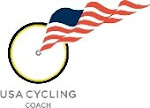I am frequently asked by newer, or returning riders how to get "better."
The first step is ALWAYS...define "better."
Do you want to ride faster? Farther? Climb a hill you've never made it over? If you don't pick a goal, how can you hope to achieve it?
I'll take the above three as a start:
"I want to have a faster average speed"
A tried and true method that I have used successfully many times requires a sophisticated piece of equipment known in layman's terms as a watch. If you want to splurge about $20-$30 dollars, get a bike computer with avg speed as one of the readouts. If you are buying a computer, go ahead and get a model with a cadence function as well since you will want it later on.
Using the computer method, while riding set the display to average speed. If you currently average 13 mph, anytime you see the average dip below that, pick up the pace a little until your current speed is higher than 13. It really is that simple, but it does require focus.
Using the watch method works best when you run the same course on different days. You'll have to set a baseline by making a mental note of how long it took to get to a certain point, or complete one loop, etc. Make it a conscious effort to get to that point faster by putting in just a tad more effort.
The average speed on any given ride can vary wildly due to outside factors such as lights, stop signs, traffic, head/tailwind, etc. My personal avg speed can vary within a 2mph range depending on external factors. So when you are trying to work on average speed, try to find a route with the least obstacles to overcome.
"I want to go farther"
This one is easy, but if you do it wrong you can get in trouble.
Pick a loop. Maybe in your neighborhood, maybe the local lake or park. Somewhere that you can do 5-10 mile loops and be back to your house or car quickly if you tire out. Do not pick an "out and back" route when you are testing your distance abilities. The worst thing you can do is get too far from home and bonk. Especially if you don't have someone you can call. Getting dehydrated or heat stroke on the side of the road sucks.
If you consistently can already do 20 miles, find a 5 mile loop and do 5 instead of 4. Worst case scenario, you will not be anymore than 2.5 miles from your safety net. You may do that extra loop slower than the first, but you did them. Get to the point that all 5 are comfortable, and then move up to 6 loops. This may take a week, or several months. It varies for everyone. Conventional wisdom says to not increase distance more than 10% per week, and this assumes you ride 3-4 times per week. If you are a weekend warrior, increasing the distance can be a little harder.
"How do I become a better climber?"
Climb.
It will never get easy. Some hills will, others will always be a challenge. But if you never do them, you will never be able to do them.
When you are climbing, shift to an easier gear and spin the pedals faster. Mashing a big gear uphill is just asking for high heart rates and sore knees. This is where the computer with the cadence funtion comes in. When you hit that local killer hill, switch to the cadence display and downshift. Opinions vary on whether to sit or stand while climbing. On a short hill, I say either. Medium, mostly sitting. Long hill, mostly sitting with a few 10 seconds to standing mixed in at regular intervals to relive pressure on your rear end and stretch out the muscles.
If you wind up walking a particular hill every time you try it, try to get further up the hill before you get off. Downshift as much as necessary to keep going. Don't forget to breathe :)
Getting up a hill is also largely a function of strength-to-weight ratio. If you can get stronger, it helps. If you have extra pounds, they are not helping you go up. If you can get stronger and shave unwanted pounds you WILL notice an improvement on the hills much more than on the flats.
That's all the coaching 101 for new riders I have for today.
Kevin "I don't do nutrition" Hill
USAC Level 3 certified coach
Subscribe to:
Post Comments (Atom)


No comments:
Post a Comment